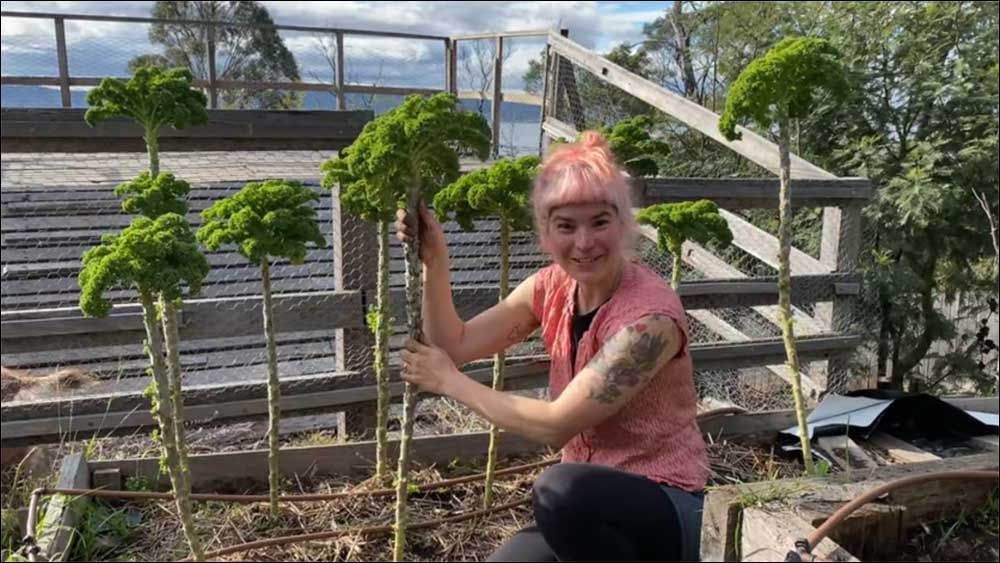Kale Trees

This is unusual, allowing Kale to set a trunk and become perennial. Leave it to a Tasmanian, lol.

Video: Perennial Kale "Trees"
She, Hannah Moloney, says that doing this causes the plants to need less water. I'm guessing their roots dig deeper than lower varieties. I wonder how the leaf taste and production changes when the plants flower and set seeds? And whether they handle colder Winters like what I get here in Missouri
You could create a whole miniature food forest with these! Put them around your fountain with some rocks and a miniature Japanese tea house.
---
Added bonus: Kale Chip Recipe: https://goodlifepermaculture.com.au/o-make-kale-chips/
ClareBroommaker
Tue, 10/19/2021 - 20:42
Permalink
Walking stick cabbage
I wonder if this is the same plant advertised in seed catalogues of my youth as "walking stick cabbage".
As these grow tall, at least it would be easier to pick the caterpillars off of them.
David Trammel
Wed, 10/20/2021 - 04:30
Permalink
Hidden Benefit - Less Pests?
That's an interesting thought, long stalk means visibility of pests. Maybe you could even do a wrap, around the trunk with something to provide a barrier that pests would have problems crossing.
I'll have to try this on some other leafies like spinach or lettuce in the Spring.
ClareBroommaker
Wed, 10/20/2021 - 12:49
Permalink
Butterflies lay eggs on cabbage
The prime pest for cabbage family plants around my garden are "cabbage white butterflies," so height is no advantage there. They fly in, lay eggs, and in a few days there are fast growing little green caterpillars munching the leaves, even getting inside headed cabbage. A wrap of the stem would not deter pests with wings. A barrier such as very light weight spun poly could work, but I think it would be more trouble on tree kale than it would be to use on a crop that grows close to the ground.
Garden centers sell this poly sheeting as "floating row cover," or "season extender" especially if it is heavier weight. It can be simply set on top of the plants or stretched on a frame such as wire arches.
Poly fiber being an oil derived product, it is not likely a solution one would be able to pass on to next generations. Diatomaceous earth dusted onto the leaves can help, but again, that it a mined product. Picking the caterpillars off by hand will always be possible.
pygmycory
Sat, 10/23/2021 - 18:06
Permalink
I've seen kale like that
Kale plants that grow really well here look a little like that by the time they go to seed (Vancouver Island), especially if you are removing leaves for food intermittently as they grow. Start them in mid/latespring/early summer, grow over summer, fall, winter, and they'll go to seed the following spring.